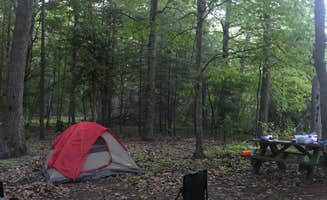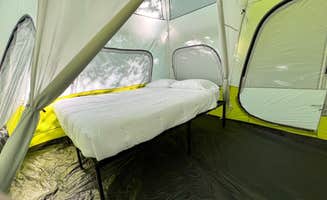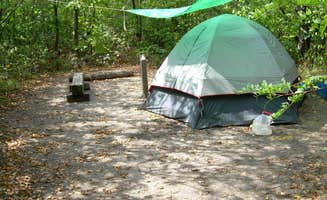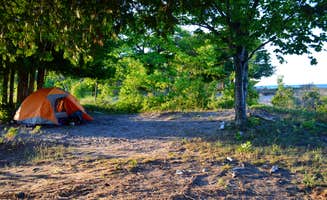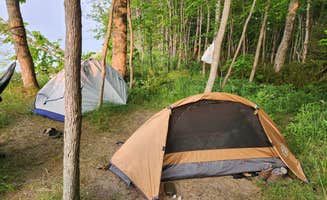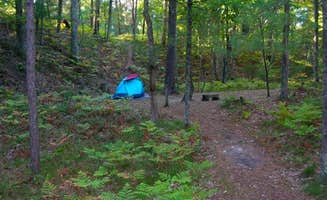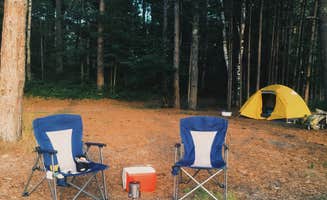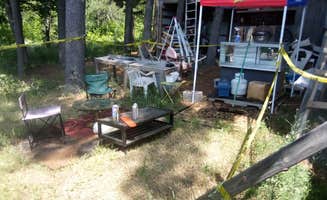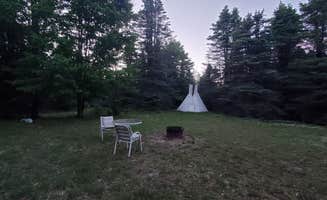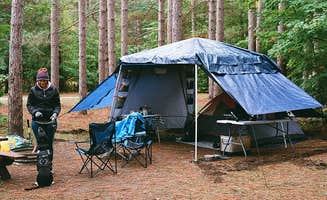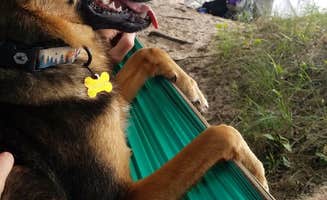Tent camping near Lake Leelanau, Michigan offers diverse shoreline and inland forest experiences within the Leelanau Peninsula. Located in the northwestern part of Michigan's Lower Peninsula, this area features rolling hills, dense hardwood forests, and clear inland lakes surrounded by glacial formations. Summer temperatures typically range from 65-80°F during peak camping season, with nighttime temperatures dropping to 50-60°F even in July.
What to do
Explore historic structures: South Manitou Island features a lighthouse and abandoned farmsteads accessible via hiking trails. "The island has a Light house that has daily tours, a ship wreck and old growth ceder trees you can hike to along with the dunes," notes a visitor to South Manitou Island Group.
Paddle to remote islands: Reach Power Island County Park Primitive Campsites via kayak for a secluded camping experience. "We paddled our sea kayaks out as we are comfortable in the changing sea/wind conditions of Lake Michigan, but do keep in mind that conditions on the water change very quickly. Even in an afternoon, the water can go from calm and glassy to 3-4 foot seas," explains one camper.
Fish the inland lakes: Multiple lakes in the region offer excellent fishing opportunities. At Sand Lakes Quiet Area Backcountry Campsites, a camper reported, "Literally, some of the best fishing I have ever done. We caught so many bass we lost count. Well gave up counting. Like every other cast."
Hike the dunes: Walking the sandy dunes provides unique perspectives of Lake Michigan. A hiker at North Manitou Island noted, "The island feels unquestionably tropical. The sparkling blue waters and sandy beaches make it feel like you're on an island at the equator, not halfway to the North Pole."
What campers like
Privacy between sites: Many Lake Leelanau tent camping areas feature well-spaced sites. At Weather Station Campground, "site 16 is the site to stay at, with relatively easy access to the lake for water. We used a carabiner to secure a line to a tree in the camp and tossed the other end down to give us a hand in climbing back up to the site."
Beach access: Campgrounds often provide direct water access. At Popple Campground, one visitor shared, "The island is beautiful, and the beach area was amazing! Very clean, and private. Felt like we were on our own little island."
Community atmosphere: Some sites offer communal camping experiences. At Village Campground, a camper noted, "There are community fire rings which led to a fun final night on the island passing some of my flasks around with fellow hikers."
Natural surroundings: The landscape varies dramatically across different camping areas. A Sand Lakes Quiet Area visitor described, "We found a quaint opening with gorgeous water where the colors complimented each other. A beautiful spot for a quick lunch and as long as no one is across the way, good for a nice dip."
What you should know
Limited drinking water: Most island camping requires water planning. On North Manitou Island Backcountry Campsites, "There are no food storage lockers, so food must be properly hung from a tree or stored in a bear canister to avoid being stolen by the microbears (aka chipmunks)!"
Ferry timing restrictions: Island access depends on scheduled transportation. A camper advised, "The ferry is unable to reach the island in dangerous weather conditions," so bringing extra food is essential.
Bugs can be intense: Insect protection is crucial for comfort. At South Manitou, a visitor simply stated, "Don't forget the bug spray," while another mentioned "bloodthirsty mosquitos" at Weather Station Campground.
Navigation challenges: Some camping areas require orienteering skills. A North Manitou Island visitor warned, "Some historical trails on the map were difficult to navigate. Having a compass made for an easier time bushwacking back to the trail but it was not easy. If you have difficulty navigating via compass and map, don't use the historical trails."
Tips for camping with families
Choose accessible sites: For families with young children, select campgrounds with shorter hiking distances. At Bay Campground, "This campground is near the lake and about a mile from the ranger station. Less traveled place and so much to explore. BEAUTIFUL hiking!"
Plan extra days: Allow buffer time when visiting islands. A South Manitou visitor advised, "I'd also recommend bringing more food than you think you need, in case the weather turns and the ferry can't pick you up on the day planned."
Consider island difficulty: South Manitou offers more amenities than North Manitou. "This island is a hidden gem 12 miles off the coast of the Sleeping Bear Dunes national Lakeshore, accessible by ferry," reports a camper about North Manitou, noting stricter rules there.
Engage with history: Historic structures interest children. One visitor shared, "We ate sweet plums that were ripe from one of the old trees on one of the farms. We camped at the Weather Station Campground and swam daily."
Tips from RVers
Limited RV options: The Lake Leelanau region offers few RV-friendly campgrounds near the tent camping islands. Torch Grove Campground provides "full hook up but they had some rustic sites too. There was a small playground also," according to a recent visitor.
Consider mainland alternatives: For RV camping, look to mainland options while taking day trips to islands. Some mainland campgrounds offer boat rentals for island access without overnight camping.


